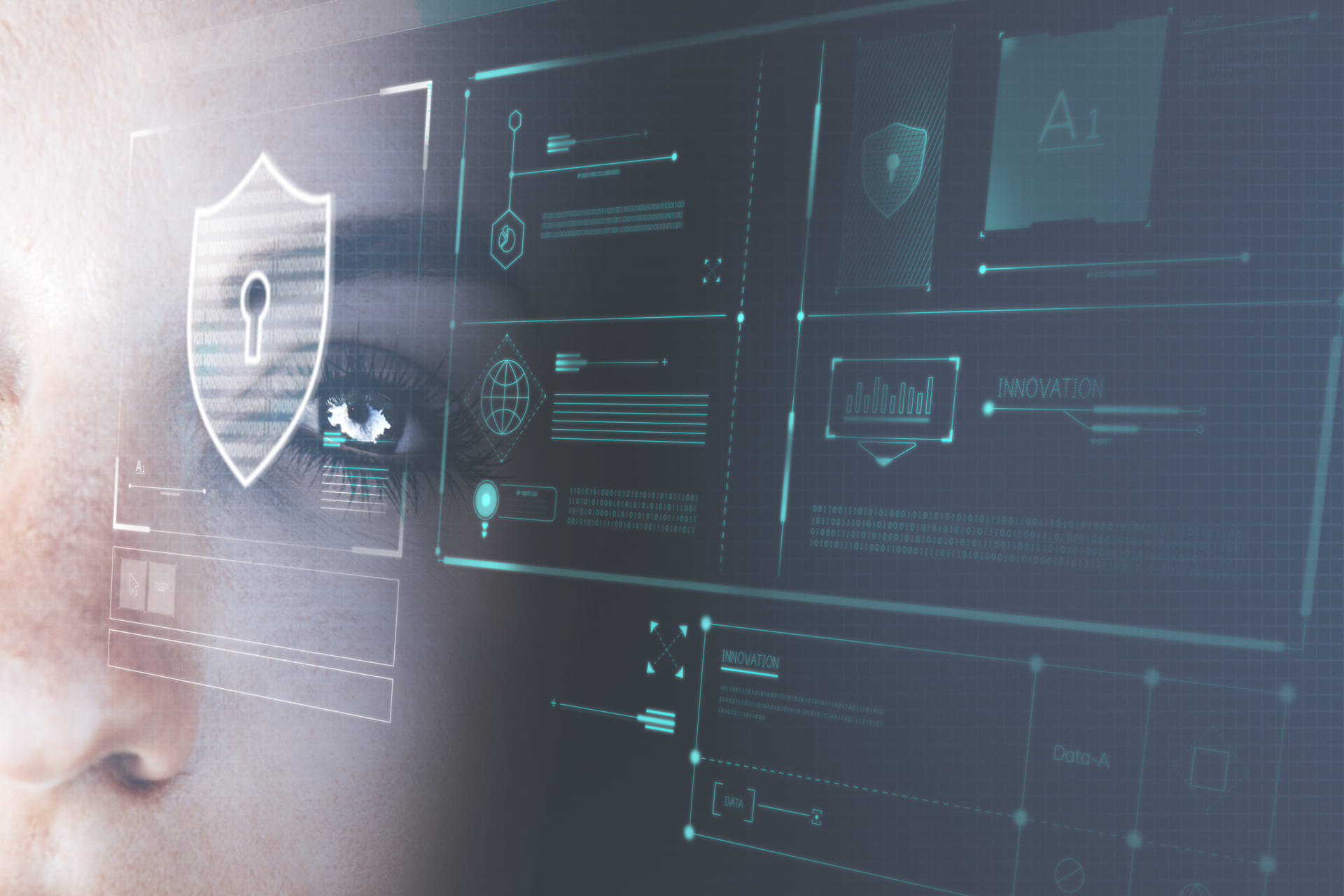The cybersecurity battlefield has fundamentally changed. What once required armies of hackers now operates through automated AI systems that can generate thousands of personalized attacks while you sleep.
Traditional security measures that protected businesses for decades are crumbling against intelligent threats that learn, adapt, and evolve faster than human defenders can respond.
This digital arms race isn’t just about larger corporations anymore. Small and medium-sized businesses have become prime targets precisely because cybercriminals know these organizations often lack the resources to deploy enterprise-level defenses.
The result? A business landscape where a single successful breach can destroy years of hard work and customer trust.
Yet within this challenge lies an unprecedented opportunity. The same artificial intelligence revolutionizing how attackers operate is now available to transform your business defenses. AI doesn’t just detect threats; it predicts, responds to, and learns from them to build stronger protection for tomorrow.
With over 25 years of experience protecting businesses from cyber threats, CMIT Solutions understands the unique challenges facing today’s organizations. As part of a network of over 900 IT experts, we provide locally owned and operated services backed by award-winning expertise and 24/7 monitoring capabilities that keep your business secure around the clock.
Our comprehensive cybersecurity solutions combine cutting-edge AI technology with expert human oversight to protect your business from evolving threats.
Pros and Cons of AI in Cyber Security
Knowing the benefits and risks of artificial intelligence in cybersecurity helps business leaders make informed decisions about their security investments. While AI offers tremendous advantages for threat detection and response, it also introduces new challenges that organizations must carefully address.
Benefits of AI in Cybersecurity
AI is revolutionizing cybersecurity by increasing speed, accuracy, and efficiency. Below are the key advantages businesses gain by integrating AI into their security infrastructure:
- Enhanced threat detection transforms how organizations identify potential security incidents through real-time pattern analysis that operates far beyond human capabilities. Machine learning algorithms can analyze vast amounts of data from network traffic, user behavior, and system logs to detect subtle anomalies that indicate sophisticated attacks.
- Automated security operations enable 24/7 monitoring and response capabilities that significantly reduce the burden on security teams. AI tools can handle routine tasks like patch management, log analysis, and basic incident triage, allowing cybersecurity professionals to focus on strategic initiatives and complex threat investigations.
- Predictive threat prevention shifts organizations from reactive to proactive security strategies by analyzing historical attack patterns and current threat intelligence. This approach allows businesses to strengthen defenses against likely attack vectors before cybercriminals can exploit vulnerabilities.
- Reduced false positives dramatically improve operational efficiency by using contextual analysis to distinguish between legitimate anomalies and actual security threats. Advanced AI algorithms eliminate the alert fatigue that overwhelms security staff and help teams prioritize genuine risks.
- Cost-effective scaling enables businesses to enhance their protection capabilities without proportionally increasing staffing costs, with most organizations seeing positive ROI within 18-24 months, according to industry analysis. This scalability proves especially valuable for growing organizations that need to secure expanding digital infrastructure.
Risks of AI in Cybersecurity
Despite its advantages, AI introduces new challenges that require careful planning and oversight. The following risks highlight potential challenges organizations must address when deploying AI-driven security solutions:
- AI-powered cyberattacks represent an escalating threat as criminals leverage generative AI to create sophisticated phishing campaigns, deepfakes, and polymorphic malware that adapts in real-time. These attacks operate at unprecedented scale and speed, making traditional signature-based defenses increasingly ineffective.
- Data privacy and compliance concerns arise from the extensive data requirements of AI systems, creating potential conflicts with regulations like GDPR, HIPAA, and SOX. Organizations must carefully balance AI capabilities with compliance requirements while ensuring that automated systems maintain appropriate audit trails and transparency.
- Over-reliance on AI can create dangerous blind spots when organizations reduce human oversight too dramatically, potentially missing contextual clues or edge cases that fall outside algorithmic parameters. Effective AI integration requires maintaining active human involvement in critical security decisions and strategic planning.
- Implementation costs can be substantial, ranging from $20,000 to $100,000+ for initial deployment, depending on organization size and complexity requirements. These investments must account for ongoing expenses, including maintenance, updates, staff training, and infrastructure upgrades.
- AI bias and false decision-making can occur when machine learning models develop biases based on training data, leading to inaccurate threat assessments or inappropriate security responses. Regular auditing and bias testing become essential to ensure fair and accurate AI behavior.
Hypothetical potential savings of AI-enhanced cybersecurity:
| Business Size | Traditional Security Annual Cost | AI-Enhanced Security Annual Cost | 3-Year Savings |
|---|---|---|---|
| Small (10-50 employees) | $25,000-$35,000 | $15,000-$25,000 | $30,000-$60,000 |
| Medium (51-250 employees) | $50,000-$75,000 | $35,000-$55,000 | $45,000-$90,000 |
| Large (250+ employees) | $100,000-$150,000 | $75,000-$110,000 | $75,000-$180,000 |
💡 Organizations that successfully implement AI in cybersecurity typically start with pilot programs in non-critical environments, allowing teams to build expertise before full-scale deployment across all systems.
For a detailed analysis of implementation strategies and risk mitigation approaches, explore our comprehensive guide on AI benefits and risks in cybersecurity.
Generative AI and Cybersecurity
Generative AI transforms cybersecurity by creating new content and defensive strategies rather than simply analyzing existing data. This adaptability makes it particularly valuable for dynamic security applications that require creativity and real-time responses.
This technology enables six key applications that revolutionize business security operations: automated threat hunting, incident response acceleration, security training customization, vulnerability assessment automation, compliance reporting and documentation, and fraud detection and prevention capabilities that identify sophisticated threats traditional systems miss.
The global market for AI-powered cybersecurity reached $20.4 billion in 2023 and is projected to surge to $93.8 billion by 2030, according to Grand View Research, reflecting the technology’s proven value in addressing evolving threats.
Current adoption shows 42% of organizations actively use AI technologies, according to IBM’s 2024 Global AI Adoption Index. Investment ranges vary by business size: small businesses typically invest $15,000-$30,000 annually, medium organizations allocate $30,000-$100,000, while larger enterprises may exceed $100,000 for comprehensive implementations.
Organizations typically achieve positive ROI within 18-24 months through reduced incident response costs and improved threat detection accuracy.
| Industry | Primary AI Applications | Typical Investment Range | Key Compliance Considerations |
|---|---|---|---|
| Healthcare | Patient data protection, HIPAA compliance monitoring | $25,000-$75,000 | HIPAA, HITECH Act |
| Financial | Fraud detection, SOX compliance, transaction monitoring | $50,000-$150,000 | SOX, PCI DSS, GDPR |
| Manufacturing | IP protection, operational technology security | $30,000-$100,000 | Industry-specific standards |
| Professional Services | Client data confidentiality, document security | $20,000-$60,000 | Client privilege, data protection |
| Retail | Payment security, customer data protection | $25,000-$80,000 | PCI DSS, state privacy laws |
Real-world implementation scenarios demonstrate the practical value of generative AI security. Consider a manufacturing company that experiences unusual network activity during off-hours when no employees should be accessing production systems.
Traditional security tools might log this as a minor anomaly, but AI-powered monitoring immediately recognizes the pattern as indicative of advanced persistent threat activity, automatically isolating affected systems and preventing potential data exfiltration.
Additional reading: how can generative AI be used in cybersecurity
Replacing Cybersecurity With AI: Is it Possible?
While many wonder, will cybersecurity be replaced by AI, the reality is that AI will not replace cybersecurity professionals but will transform how organizations protect digital assets. While AI excels at processing data and automating routine tasks, human expertise remains essential for strategic decision-making, creative problem-solving, and managing complex threats requiring contextual knowledge.
The job market contradicts replacement fears, with 3.5 million unfilled cybersecurity positions expected by 2025 and 35% job growth projected through 2031 according to the Bureau of Labor Statistics. Cybercrime costs are expected to reach $10.5 trillion annually by 2025, according to Cybersecurity Ventures, while 95% of successful attacks involve human error that technology alone cannot address.
⚖️ Organizations using AI-enhanced security report 60% faster threat detection and 40% reduction in false positives when combined with skilled human oversight, demonstrating the power of human-AI collaboration.
AI’s impact involves role evolution rather than elimination. Security analysts become AI-assisted threat hunters, incident response teams serve as strategic coordinators, and compliance officers expand into AI governance specialists.
New roles are emerging, including AI security engineers, machine learning security specialists, and AI ethics officers who ensure automated systems make fair and transparent decisions while maintaining regulatory compliance.
| Traditional Role | AI-Enhanced Evolution | New Responsibilities |
|---|---|---|
| Security Analyst | AI-Assisted Threat Hunter | AI tool management, complex incident investigation |
| Incident Response Team | Strategic Response Coordinator | AI workflow orchestration, root cause analysis |
| Compliance Officer | AI Governance Specialist | Algorithmic bias detection, AI ethics oversight |
| Penetration Tester | Advanced Threat Simulation Expert | AI-powered attack simulation, creative vulnerability testing |
The most effective cybersecurity strategies combine AI’s processing power with human creativity and strategic thinking. Research from MIT and Carnegie Mellon shows security teams using AI support respond to threats three times faster while maintaining higher accuracy.
Organizations relying too heavily on AI without human oversight often experience “automation bias,” blindly trusting AI decisions without validation. This can lead to missed threats or inappropriate responses that disrupt operations. The optimal balance involves AI handling data-intensive tasks while humans provide oversight, context, and strategic direction.
At CMIT Solutions, our award-winning cybersecurity experts work alongside advanced AI tools to deliver comprehensive protection that combines automated capabilities with human insight and strategic oversight. Reach out online to schedule a consultation.
Artificial Intelligence in Cyber Security Threat Detection Systems
AI-powered threat detection uses machine learning algorithms to identify, analyze, and respond to security threats in real-time. Unlike traditional systems relying on predefined rules and known signatures, AI systems continuously learn from behavioral patterns and detect previously unknown threats through advanced pattern recognition.
The evolution spans five decades, progressing from basic rule-based systems in the 1970s to today’s sophisticated AI platforms. Early signature-based detection only identified known threats, while modern AI-driven systems combine machine learning, deep learning, and behavioral analysis to detect both known and unknown threats with unprecedented accuracy and speed.
AI threat detection systems can identify suspicious patterns and respond to emerging threats in seconds rather than the hours or days required by traditional methods, dramatically reducing the window of vulnerability.
Key capabilities include behavioral analysis, monitoring user activities, pattern recognition, identifying correlations across vast datasets, and automated response mechanisms that immediately isolate affected systems or block suspicious traffic.
These systems excel at detecting malware, ransomware, AI phishing, insider threats, zero-day attacks, and network intrusions by recognizing attack techniques and behavioral patterns rather than relying solely on known signatures.
| Detection Capability | Traditional Systems | AI-Enhanced Systems | Improvement Factor |
|---|---|---|---|
| Threat Detection Speed | Hours to days | Seconds to minutes | 100-1000x faster |
| Unknown Threat Detection | Limited to signatures | Behavioral analysis capable | Significant improvement |
| False Positive Rate | High alert volume | Intelligent filtering | 60-80% reduction |
| Scalability | Manual configuration required | Automatic adaptation | Unlimited scaling |
| Response Automation | Manual intervention | Immediate automated action | Real-time response |
Industry applications demonstrate AI threat detection’s practical value across sectors.
Healthcare organizations protect electronic health records while maintaining HIPAA compliance, financial institutions leverage real-time fraud detection, ensuring SOX and PCI DSS compliance, manufacturing companies secure industrial control systems from nation-state attacks, and professional services firms safeguard client communications through advanced encryption.
Implementation typically spans 2-8 weeks, depending on complexity: assessment and planning (1-2 weeks), infrastructure preparation (2-3 weeks), pilot deployment (2-4 weeks), and full production rollout (2-4 weeks) with ongoing optimization.
For comprehensive guidance on implementing AI-powered threat detection based on CISA guidance and industry best practices, explore our detailed analysis of AI threat detection systems and their applications.
Artificial Intelligence and Cybersecurity Phishing Protection
AI phishing attacks represent one of the most significant cybersecurity challenges today, as artificial intelligence eliminates traditional warning signs like poor grammar and generic greetings. Modern AI-generated campaigns feature perfect personalization and contextual awareness that make them virtually indistinguishable from legitimate communications.
Current statistics reveal the growing threat: 0.7-4.7% of phishing emails are currently AI-generated, according to Hoxhunt’s analysis of 386,000 malicious emails, while phishing activity has increased 95% since 2020. Success rates show 60% of recipients fall victim to AI-automated phishing, comparable to expert-crafted human attacks.
💡 AI enhances phishing through automated content generation at unprecedented scale, perfect language translation, social engineering enhancement through public data analysis, and real-time conversation capabilities.
Voice cloning and deepfake technologies represent the newest frontier. A recent case involved a finance worker who participated in a video call with fabricated executives and approved a $25 million fraudulent payment, demonstrating how multimedia deception has evolved beyond email phishing.
Detection methods that remain effective focus on behavioral indicators: sense of urgency tactics, unusual timing or context, and requests for sensitive information. Verification through independent channels becomes critical when unexpected communications request urgent action involving sensitive information or financial transactions.
| Attack Type | Traditional Indicators | AI-Enhanced Characteristics | Detection Strategy |
|---|---|---|---|
| Email Phishing | Poor grammar, generic greetings | Perfect personalization, contextual accuracy | Independent verification protocols |
| Voice Phishing | Obvious accent, poor audio quality | Perfect voice cloning, natural conversation | Verification codes, callback procedures |
| Deepfake Videos | Low resolution, obvious artifacts | High-quality video, synchronized audio | Multiple channel verification |
| Social Engineering | Generic scenarios, limited research | Detailed personal information, recent context | Skepticism of unexpected requests |
Defense strategies require multilayered approaches combining AI-powered protection with human awareness and verification protocols. AI-powered email filtering detects generated content characteristics, behavioral analysis monitors communication patterns, and context-based defenses analyze sender-recipient relationships and timing.
Multi-channel protection includes voice verification systems, network monitoring, and endpoint protection that detects unusual file access patterns. Employee training must evolve to address AI-specific threats while building verification habits for unexpected communications.
Implementation typically spans 4-6 weeks for basic systems and up to 12 weeks for advanced solutions. Organizations can expect annual investments of $5,000-$40,000, depending on business size, with ROI typically achieved within 6-12 months through prevented incidents.
Stay ahead of evolving cyber threats, contact us to explore how AI can improve your company’s security posture.
AI for Cyber Security Incident Response
Automated incident response uses AI and machine learning to detect, analyze, and respond to security threats without human intervention. This technology processes massive data from multiple sources simultaneously, enabling organizations to respond to incidents in seconds rather than hours while maintaining consistent performance.
The speed advantage is dramatic; automated systems identify and contain threats within seconds compared to traditional methods requiring hours or days. This reduces attacker dwell time, minimizing potential damage and data exposure.
Key components include behavioral analytics engines monitoring user patterns, threat intelligence integration incorporating real-time global threat data, and SOAR platforms coordinating responses across multiple security tools. Machine learning classification systems continuously improve accuracy by learning from each incident.
Organizations implementing automated incident response typically experience response times measured in seconds rather than hours, with some systems containing threats faster than human operators could even recognize an incident occurring.
Core technologies include SOAR platforms for unified workflows, XDR solutions for comprehensive threat detection, SIEM systems for data analysis, EDR tools for device monitoring, and network traffic analysis for real-time communication examination.
Real-world benefits include dramatic response time reduction, cost savings through operational efficiency, improved accuracy, eliminating human error, enhanced compliance documentation, and scalable security supporting business growth without proportional staffing increases.
| Implementation Phase | Timeline | Key Activities | Success Metrics |
|---|---|---|---|
| Planning & Assessment | 2-4 weeks | Security audit, use case identification, vendor selection | Completed risk assessment, approved implementation plan |
| Pilot Deployment | 4-6 weeks | Limited rollout, staff training, and initial testing | Successful pilot completion, staff proficiency validation |
| Production Rollout | 6-8 weeks | Full deployment, process refinement, and documentation | System operational, all workflows functioning |
| Optimization | Ongoing | Performance monitoring, continuous improvement | Reduced response times, improved detection rates |
Hypothetical scenarios illustrate practical value. Consider a manufacturing company experiencing unusual weekend network activity when no employees should be accessing production systems. Traditional security would wait until Monday for human analysis, potentially allowing attackers days to establish persistence.
However, AI-powered incident response immediately investigates the anomaly, identifies advanced persistent threat indicators, isolates affected systems, and alerts personnel within minutes.
For comprehensive implementation guidance and best practices based on industry standards, explore our detailed analysis of automated incident response systems and their business applications.
AI Cyber Security Endpoint Protection
AI enhancement of endpoint security represents a critical evolution in protecting computing devices like laptops, smartphones, tablets, and IoT hardware from cyber threats. AI techniques make endpoint security more predictive, adaptive, and responsive against increasingly sophisticated attacks targeting individual devices.
The endpoint security market shows significant AI-driven growth, with revenue expected to reach $16.5 billion in 2025 and projected to grow at 12.36% annually to $26.3 billion by 2029. This reflects industry recognition that AI-powered solutions provide superior protection compared to traditional signature-based approaches.
Core capabilities include predictive threat detection, identifying patterns faster than traditional methods, behavioral analysis, monitoring device activities, automated response capabilities, isolating affected devices, and continuous learning that adapts to new attack patterns.
📌 Two key transformation areas demonstrate AI’s impact: advanced data intelligence processing petabytes of security data in real-time to forecast incidents, and hyper-automated vulnerability assessment simulating millions of exploit scenarios to predict and prevent attacks.
Key technologies include Next-Generation Antivirus (NGAV) engines leveraging AI for real-time threat detection, EDR tools providing automated responses and forensic data collection, behavioral analytics establishing baseline patterns, and Zero Trust integration continuously validating access requests.
Current threat statistics underscore the need: 67% of phishing attacks now use AI technology, 61% of security leaders report AI-generated campaigns targeting their organizations, and Deloitte predicts deepfake-related losses will reach $40 billion by 2027.
| Technology Component | Traditional Capability | AI-Enhanced Capability | Protection Improvement |
|---|---|---|---|
| Antivirus | Signature-based detection | Behavioral pattern analysis | 10x faster threat identification |
| Vulnerability Assessment | Scheduled scanning | Continuous prediction | Proactive threat prevention |
| Data Loss Prevention | Rule-based classification | Context-aware protection | 90% reduction in false positives |
| Incident Response | Manual investigation | Automated analysis | Minutes vs. hours response time |
Implementation challenges include privacy concerns from extensive data requirements necessitating stringent policies and regulatory compliance, plus addressing AI-supercharged attacks where cybercriminals use AI to develop sophisticated malware and evasion techniques.
Risk management requires regular audits, timely updates, continuous training, and layered security measures, ensuring multiple defenses remain intact if one fails.
Future trends indicate increasingly autonomous AI endpoint security with algorithms anticipating and mitigating threats before they manifest. Organizations must invest in scalable AI infrastructures, adapting to evolving landscapes while implementing Zero Trust principles.
Secure software development represents another critical application where AI analyzes code during development, identifying potential flaws and helping developers fix issues at each phase rather than discovering problems in production.
For comprehensive guidance on implementing AI-powered endpoint protection, explore our detailed analysis of AI endpoint protection solutions and their business benefits.
The Dark Side: How Cybercriminals Use AI
Artificial intelligence serves as a double-edged sword in cybersecurity, with the same technologies enhancing defenses being weaponized by cybercriminals for more sophisticated attacks. This technological arms race demonstrates why organizations must understand how malicious actors leverage AI to develop effective countermeasures.
Criminal AI applications enable unprecedented automation and scaling of operations. Automated attack generation creates thousands of unique malware variants and phishing campaigns without extensive expertise.
Social engineering enhancement analyzes public data to craft highly personalized attack scenarios. Deepfake creation generates realistic video and audio content impersonating executives for fraudulent purposes.
The speed and scale advantages AI provides to cybercriminals fundamentally change the threat landscape, enabling attacks that operate at machine speed while requiring minimal human resources to execute.
Data poisoning and adversarial attacks target AI systems themselves, compromising machine learning models to cause security systems to misclassify threats or develop exploitable blind spots.
Specific evolving techniques include AI-generated malware that automatically modifies its code to evade detection, voice cloning scams using minutes of sample audio for convincing impersonations, and personalized phishing campaigns that reference recent activities and relationships with unprecedented accuracy, achieving significantly higher success rates.
| Attack Type | Traditional Method | AI-Enhanced Method | Success Rate Increase |
|---|---|---|---|
| Phishing Campaigns | Mass generic emails | Personalized, contextual messages | 300-500% improvement |
| Malware Development | Manual coding variants | Automated polymorphic generation | Unlimited variations |
| Social Engineering | Basic research, scripts | Deep personality analysis, real-time adaptation | 400-600% improvement |
| Voice Fraud | Human impersonation | Perfect voice cloning | Near-perfect deception |
Timeline analysis reveals accelerating AI adoption by cybercriminals: basic machine learning for credential stuffing (2018-2019), increased AI-generated phishing and basic deepfakes (2020-2022), and sophisticated applications including real-time attack adaptation and AI-powered malware (2023-2025).
The FBI’s Internet Crime Complaint Center and CISA report escalating sophistication of AI-enabled attacks. The democratization of AI tools means sophisticated attack capabilities previously requiring expert knowledge are now accessible to criminals with limited technical skills through cloud-based services and user-friendly interfaces.
Knowing these threats helps organizations develop appropriate countermeasures. Effective defense requires combining AI-powered security tools with human expertise, comprehensive training programs, and robust verification protocols that can identify and respond to AI-enhanced attacks.
Not sure where to begin? Schedule a consultation with our AI security specialists to get a customized implementation roadmap.
Industry-Specific AI Cybersecurity Applications
Different industries face unique cybersecurity challenges requiring tailored AI applications addressing sector-specific threats, regulatory requirements, and operational constraints:
- Healthcare: AI applications focus on automated HIPAA compliance monitoring that detects unauthorized access to electronic health records and identifies potential privacy violations in real-time. Medical device security uses AI to monitor device behavior and network communications, identifying anomalies that might indicate compromise while ensuring patient safety.
- Financial Services: AI-powered fraud detection analyzes transaction patterns, user behaviors, and communication anomalies to identify suspicious activities in real-time with greater accuracy than traditional approaches. These systems detect account takeovers, fraudulent transactions, and insider trading attempts while ensuring regulatory compliance with SOX, PCI DSS, and other financial regulations.
- Manufacturing: AI applications include intellectual property protection systems that monitor for unauthorized access to design files, manufacturing processes, and proprietary data from nation-state actors and cybercriminals. Operational technology security uses machine learning to establish baseline behaviors for industrial control systems and immediately detect anomalies indicating potential cyberattacks.
- Professional Services: AI systems monitor document access patterns and communication behaviors to detect unauthorized sharing attempts or potential data breaches while maintaining strict client confidentiality. Client privilege protection uses natural language processing to identify and secure privileged communications, ensuring compliance with professional confidentiality requirements.
- Retail and E-commerce: AI-powered payment security analyzes transaction patterns to identify potentially fraudulent activities while maintaining smooth customer experiences and defending against point-of-sale attacks. Customer data protection systems monitor for unauthorized access attempts and data exfiltration while ensuring compliance with PCI DSS and state privacy regulations.
| Industry | Primary Threat Vectors | AI Application Focus | Typical ROI Timeline |
|---|---|---|---|
| Healthcare | Insider threats, ransomware, and device vulnerabilities | HIPAA compliance, access monitoring, and device security | 12-18 months |
| Financial Services | Fraud, insider trading, regulatory violations | Transaction monitoring, behavioral analysis | 6-12 months |
| Manufacturing | IP theft, OT attacks, supply chain disruption | Asset protection, industrial control monitoring | 18-24 months |
| Professional Services | Data breaches, privilege violations, client exposure | Document security, communication monitoring | 12-18 months |
| Retail/E-commerce | Payment fraud, customer data theft, and POS attacks | Transaction analysis, access control | 9-15 months |
Sector-specific threat statistics highlight varying risks: healthcare organizations experience data breaches averaging $9.77 million per incident, according to the average cost of a data breach, financial institutions face fraud losses exceeding $5.97 million on average, and manufacturing companies report average costs of $5.56 million.
Compliance requirements vary significantly across sectors, healthcare requires HIPAA compliance, financial services need SOX and PCI DSS adherence, and manufacturing follows industry-specific standards. AI systems must support these different regulatory requirements while providing comprehensive audit trails.
Real world example: A regional hospital’s AI-powered access monitoring detected unusual after-hours patient record access, a community bank’s AI fraud detection prevented sophisticated account takeover attempts, and a manufacturing facility’s AI network monitoring stopped an advanced persistent threat targeting industrial control systems.
💡 Organizations achieve the best results when they combine general AI cybersecurity capabilities with industry-specific threat intelligence and compliance monitoring tailored to their operational environment, following guidance from the Small Business Administration’s cybersecurity resources.
Building an AI-Human Cybersecurity Team
The most effective cybersecurity strategies combine AI capabilities with human expertise, creating collaborative teams that leverage automated systems and skilled professionals. This hybrid approach recognizes that while AI excels at data processing and pattern recognition, human judgment remains essential for strategic decision-making and contextual knowledge of complex threats.
Optimal balance requires defining which tasks AI handles versus human intervention. AI excels at continuous monitoring and rapid data analysis, while humans provide strategic planning, creative threat hunting, and nuanced security decisions.
New skill requirements include knowing AI system operations, limitations, and interpreting AI-generated insights effectively. Security teams must develop machine learning competencies while maintaining traditional cybersecurity expertise.
Workflow integration strategies should create seamless collaboration between AI automation and human oversight, with clear escalation criteria ensuring critical decisions remain in human hands while routine tasks benefit from AI efficiency.
Decision-making frameworks establish guidelines for AI autonomy versus human intervention. Low-risk activities like log analysis can be fully automated, while high-stakes decisions involving business-critical systems require human approval.
Team structure models vary by organization size: small businesses have one professional managing AI tools, medium organizations develop hybrid teams with AI handling detection while humans investigate alerts, and large enterprises implement tiered structures with AI screening, junior analysts investigating, and senior experts focusing on complex threats.
| Team Size | AI Tool Management | Human Responsibilities | Collaboration Model |
|---|---|---|---|
| Small (1-3 staff) | Single administrator | All strategic decisions, complex investigations | AI-assisted individual work |
| Medium (4-10 staff) | Dedicated AI specialist | Threat analysis, incident response, and policy development | A hybrid team with defined roles |
| Large (10+ staff) | AI operations team | Strategic planning, advanced threat hunting, and leadership | Tiered structure with AI integration |
Training program recommendations include comprehensive AI literacy education covering machine learning basics, algorithm limitations, and bias recognition. Regular scenario-based exercises combining AI insights with human decision-making build collaborative skills and reinforce proper escalation procedures.
Job role evolution shows traditional positions adapting to incorporate AI capabilities. Security analysts become AI-assisted threat hunters, incident response coordinators orchestrate AI-powered containment while focusing on strategic planning, compliance specialists evolve into AI governance experts, and threat intelligence analysts combine AI-processed data with human analysis.
The collaborative future of cybersecurity depends on organizations successfully integrating AI capabilities with human expertise, creating teams more effective than either approach alone. This requires ongoing training investment, clear role definitions, and cultural adaptation embracing technology while valuing human insight.
At CMIT Solutions, our award-winning cybersecurity experts work alongside advanced AI tools to deliver comprehensive protection that combines automated efficiency with human strategic oversight through our locally owned and operated services.
AI Cybersecurity Implementation Roadmap
Successfully implementing AI cybersecurity solutions requires a structured approach that addresses technical requirements, organizational readiness, and business objectives while minimizing operational disruption.
1. Assessment Phase
Conduct a thorough evaluation of the current security posture to identify gaps, vulnerabilities, and areas where AI provides immediate value. Document existing infrastructure, analyze historical incident data, and assess staff capabilities to establish baseline measurements for improvement.
2. Planning Phase
Focus on use case identification, budget allocation, and vendor selection based on organizational needs and constraints. Identify high-impact applications where AI addresses current pain points while accounting for implementation costs, operational expenses, training requirements, and infrastructure upgrades.
3. Implementation Phase
Follow structured progression from pilot programs through full production deployment, allowing organizations to build experience while minimizing risk. Begin with pilot deployment in non-critical environments, provide staff training, and then gradually expand AI capabilities across high-priority areas based on successful results.
4. Optimization Phase
Focus on performance monitoring, continuous improvement, and scaling capabilities based on evolving business needs and threat landscapes. Regular assessment of AI system effectiveness identifies enhancement opportunities and ensures continued alignment with business objectives.
| Implementation Phase | Timeline | Key Activities | Success Criteria |
|---|---|---|---|
| 1. Assessment | 2-3 weeks | Security audit, gap analysis, and requirement definition | Completed baseline assessment, approved project scope |
| 2. Planning | 3-4 weeks | Vendor selection, budget approval, and implementation design | Selected solution, approved budget, detailed plan |
| 3. Pilot Deployment | 4-6 weeks | Limited implementation, staff training, and initial testing | Successful pilot operation, trained staff, validated approach |
| 4. Production Rollout | 6-10 weeks | Full deployment, process refinement, and documentation | Operational system, established procedures, performance metrics |
| 5. Optimization | Ongoing | Performance monitoring, continuous improvement, and scaling | Achieved target metrics, ongoing enhancement, and business value |
Timeline expectations range from 6-12 months for complete implementation: small businesses may complete basic implementations in 3-6 months, while larger organizations with complex infrastructure require 12-18 months for comprehensive deployment.
Success metrics should be established during planning to measure effectiveness and business value. Technical metrics include threat detection accuracy, false positive rates, and incident response times, while business metrics encompass cost savings, productivity improvements, and risk reduction.
📌 Budget planning should account for software licensing, professional services, staff training, infrastructure upgrades, and ongoing support costs to ensure realistic financial planning and successful implementation.
Common mistakes include underestimating training requirements, inadequate integration planning, and unrealistic timeline expectations. Organizations can avoid these by following structured methodologies, maintaining realistic expectations, and ensuring adequate training resources.
Vendor evaluation criteria should emphasize integration capabilities, scalability options, support quality, and long-term viability. Organizations benefit from evaluating multiple solutions, conducting proof-of-concept testing, and knowing upgrade paths.
Future-Proof Your Business With CMIT Solutions
As cyber threats continue evolving at unprecedented speed and complexity, organizations need cybersecurity partners who combine cutting-edge AI technology with deep expertise and local relationships.
CMIT Solutions brings over 25 years of cybersecurity experience and a network of 900+ IT experts to help businesses implement comprehensive AI-enhanced security strategies that protect against today’s threats while preparing for tomorrow’s challenges.
Our locally owned and operated approach integrates advanced AI capabilities with proven cybersecurity fundamentals, ensuring that artificial intelligence enhances rather than replaces essential security practices.
We understand that small and medium-sized businesses need enterprise-level protection without enterprise-level complexity, which is why our award-winning model provides personalized service backed by national resources and expertise.
Our 24/7 monitoring capabilities ensure that your AI-enhanced security systems receive continuous oversight and support, combining automated threat detection with human expertise to provide comprehensive protection around the clock. This collaborative approach leverages the best of both worlds: AI efficiency and human insight.
Protect your business today, contact us or call (800) 399-2648 to speak directly with a cybersecurity expert about AI-powered solutions tailored to your organization.
Key Takeaways on the Future of Cybersecurity and AI
The integration of AI in cybersecurity represents a fundamental shift that enhances rather than replaces human expertise, creating more effective and efficient security operations. Organizations successfully implementing AI-powered solutions achieve faster threat detection, reduced costs, and improved protection while maintaining essential human insight for strategic decision-making.
AI cybersecurity offers significant benefits, including automated threat detection, predictive prevention, and scalable protection that grows with business needs. However, organizations must address inherent risks, including AI-powered attacks, implementation costs, and the need for proper human oversight.
Successful implementation requires a structured approach beginning with thorough assessment, progressing through careful planning and pilot testing, and focusing on optimization and continuous improvement. Organizations benefit most when combining AI capabilities with industry-specific expertise and maintaining partnerships with experienced cybersecurity providers.
Future success requires embracing AI as a collaborative tool that enhances human capabilities while maintaining the critical thinking, creativity, and strategic planning only experienced professionals provide.
FAQs
What is the average cost of implementing AI cybersecurity for a small business?
Small businesses typically invest $15,000-$30,000 annually for comprehensive AI-enhanced cybersecurity solutions, with initial implementation costs ranging from $20,000-$40,000. Most organizations achieve positive ROI within 18-24 months through reduced incident response costs, improved threat detection, and decreased staffing requirements for routine security tasks.
How long does it take to see results from AI-powered security systems?
AI cybersecurity systems begin providing value immediately upon deployment, with initial threat detection improvements visible within days of implementation. Complete optimization typically occurs within 3-6 months as systems learn organizational patterns and staff become proficient with new tools and processes.
Can AI cybersecurity solutions integrate with our existing IT infrastructure?
Modern AI cybersecurity platforms are designed with extensive integration capabilities and APIs that connect seamlessly with existing firewalls, endpoint protection, email security, and network monitoring tools. Most implementations require minimal infrastructure changes while providing comprehensive coverage across all organizational systems and applications.
What happens if our AI security system generates false alarms or blocks legitimate business activities?
AI systems include built-in learning mechanisms that reduce false positives over time, with most organizations experiencing 60-80% fewer false alarms compared to traditional security tools. Proper implementation includes override procedures, whitelist capabilities, and escalation protocols that ensure business continuity while maintaining security effectiveness.
Do we need to hire specialized staff to manage AI cybersecurity tools?
Most AI cybersecurity solutions are designed for ease of use and can be managed by existing IT staff with appropriate training and support. Organizations typically benefit more from partnering with experienced managed service providers who can provide AI expertise, 24/7 monitoring, and strategic guidance rather than hiring specialized internal staff.







